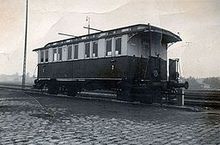Niederweserbahn
| Niederweserbahn | |||||||||||||||||||||||||||||||||||||||||||||||||||||||||||||||||||||||||||||||||||||||||||||||||
|---|---|---|---|---|---|---|---|---|---|---|---|---|---|---|---|---|---|---|---|---|---|---|---|---|---|---|---|---|---|---|---|---|---|---|---|---|---|---|---|---|---|---|---|---|---|---|---|---|---|---|---|---|---|---|---|---|---|---|---|---|---|---|---|---|---|---|---|---|---|---|---|---|---|---|---|---|---|---|---|---|---|---|---|---|---|---|---|---|---|---|---|---|---|---|---|---|---|
| Course book section (DB) : | 215m (1944) | ||||||||||||||||||||||||||||||||||||||||||||||||||||||||||||||||||||||||||||||||||||||||||||||||
| Route length: | 38.4 km | ||||||||||||||||||||||||||||||||||||||||||||||||||||||||||||||||||||||||||||||||||||||||||||||||
| Gauge : | 1435 mm ( standard gauge ) | ||||||||||||||||||||||||||||||||||||||||||||||||||||||||||||||||||||||||||||||||||||||||||||||||
|
|||||||||||||||||||||||||||||||||||||||||||||||||||||||||||||||||||||||||||||||||||||||||||||||||
The Lower Weser Railway was a standard-gauge narrow-gauge railway track, the km in its original length of 38.4 on the right bank of the lower Weser - landscape Easter Stade - the small station Farge in the circle Blumenthal with the small train station Wulsdorf (at - Bremerhaven railway Bremen in) circle Geestemünde Association .
history
Farge-Wulsdorf small railway
Kleinbahn Farge-Wulsdorf GmbH was founded by the state of Prussia , the province of Hanover , the Blumenthal district , the city of Bremerhaven and several other communities. It opened the line from Wulsdorf to Stotel on August 2, 1911 and extended it to Farge on September 5, 1911. The route lay in the Prussian province of Hanover, apart from 1.5 km in oldenburg ischemic territory, while both endpoints at that time now belong to the state of Bremen . In Farge there was a connection to the Bremen-Farge-Bremen -Vegesack railway of the Farge-Vegesacker Railway .
From 1923, operations were run by the Hanover State Small Railway Authority, which was renamed the State Railway Authority in 1940 and the Lower Saxony State Railway Authority (NLEA) in 1947 . After its dissolution in 1959, the Osthannoversche Eisenbahnen AG took its place. The local management was in Wulsdorf.
The expectations placed on the train were not fulfilled. Passenger traffic was stopped in the summer of 1920, but resumed in the mid-1920s. On June 5, 1931, it came to a standstill again and was replaced by a 46 km long railway-owned bus line Geestemünde - Wesermünde - Farge. On September 1, 1938, freight traffic south of Sandstedt was also stopped. The line from Sandstedt to Farge was dismantled. A few kilometers of track remained passable only north of Farge and were used in the service of the Wehrmacht , and later also the Bundeswehr , as a connecting line to the Bremen-Farge-Bremen-Vegesack railway.
Freight traffic continued on the northern part of the route from Wulsdorf to Sandstedt (21 km). During the Second World War, due to the confiscation of buses and a lack of fuel, from July 6, 1943, passenger transport also returned to the railways. Rail traffic was stopped on April 15, 1945 and resumed on July 1, 1945.
On November 5, 1946, the trains from and to Bremerhaven Hauptbahnhof were tied through. Initially, the number of passengers rose rapidly, and in 1947 the small train had 35 employees again.
Niederweserbahn
The Kleinbahn Farge-Wulsdorf GmbH renamed itself on 21 January 1949 in Lower Weser course GmbH to because the company name did not fit longer route. Sandstedt became the operating center of the Niederweserbahn, a locomotive shed for the steam locomotive and the railcars was built.
The number of passengers and the volume of goods fell steadily. “The railway dug its own grave with the gravel transport for road construction,” reported an employee from the railway administration in 1960. The transport of people and goods between Sandstedt and Bremerhaven took place until September 26, 1964, when this section was also canceled. The company existed until June 13, 1981 because of the bus service.
vehicles
The Kleinbahn had an extensive fleet of vehicles. In the first few years this consisted of four three-axle steam locomotives. Two locomotives were delivered brand new by Hanomag , two locomotives built by Henschel & Sohn were acquired by the Westfälische Landes-Eisenbahn . In addition, in 1911 there were nine passenger cars, two mail / baggage cars and ten freight cars. Diesel locomotives and railcars were added later. In 1949 a used Mosel railcar was acquired and sold to the Osthannoversche Eisenbahnen in 1965 .
Deutz's 1703 locomotive, built in 1916, was in the Stade Technology and Transport Museum , which was closed in November 2012. The body of a passenger car now used as a gazebo (formerly NWB No. 724) is located on private property not far from the former company premises in Bremerhaven-Wulsdorf.
The G 101 boxcar and the O 052 gondola have also been preserved. Both vehicles are from the original equipment of the railway and switched to the Bremervörde-Osterholzer Railway (BOE) after the shutdown - the G 101 was listed as the G 56. With the merger between the Bremervörde-Osterholzer Eisenbahn and the Wilstedt-Zeven-Tostedter Eisenbahn (WZTE) in 1981, both cars were transferred to the vehicle fleet of the newly founded railways and transport company Elbe-Weser (evb). In 1999 the wagons were given away to Kleinbahn Wathlingen-Ehlershausen eV, which kept them until 2010. The G 101 went to private use on the museum railway Friesoythe-Cloppenburg eV , the O 052 returned to the evb and was erected as a memorial at Worpswede train station .
Route of the Niederweserbahn
The route of the Niederweserbahn can still be seen in some places. A cycle path has been created here along the former B 6 south of Bremerhaven . In Bremerhaven, the Kleinbahnweg through Wulsdorf to Wulsdorf station is reminiscent of the Niederweserbahn.
literature
- Ingrid and Werner Schütte: The Niederweserbahn . Verlag Uhle and Kleimann, Lübbecke 1984, ISBN 3-922657-37-0
- Gerd Wolff: German small and private railways. Volume 10: Lower Saxony 2 . Eisenbahn-Kurier, Freiburg 2007, ISBN 978-3-88255-669-8 , p. 53-71 .
- Wilhelm Stölting: The history of the Niederweserbahn. The former Farge-Wulsdorf small railway in the service of economic development. in: Jahrbuch der Männer vom Morgenstern 61, 1982. pp. 341–376.
- Series of articles in the Nordsee-Zeitung (Bremerhaven) from August 2, 2006 on the 95th anniversary of the first voyage.
Web links
Individual evidence
- ↑ a b The Niederweserbahn private website
- ↑ a b c A hapless railway project Weser-Kurier September 21, 2011




